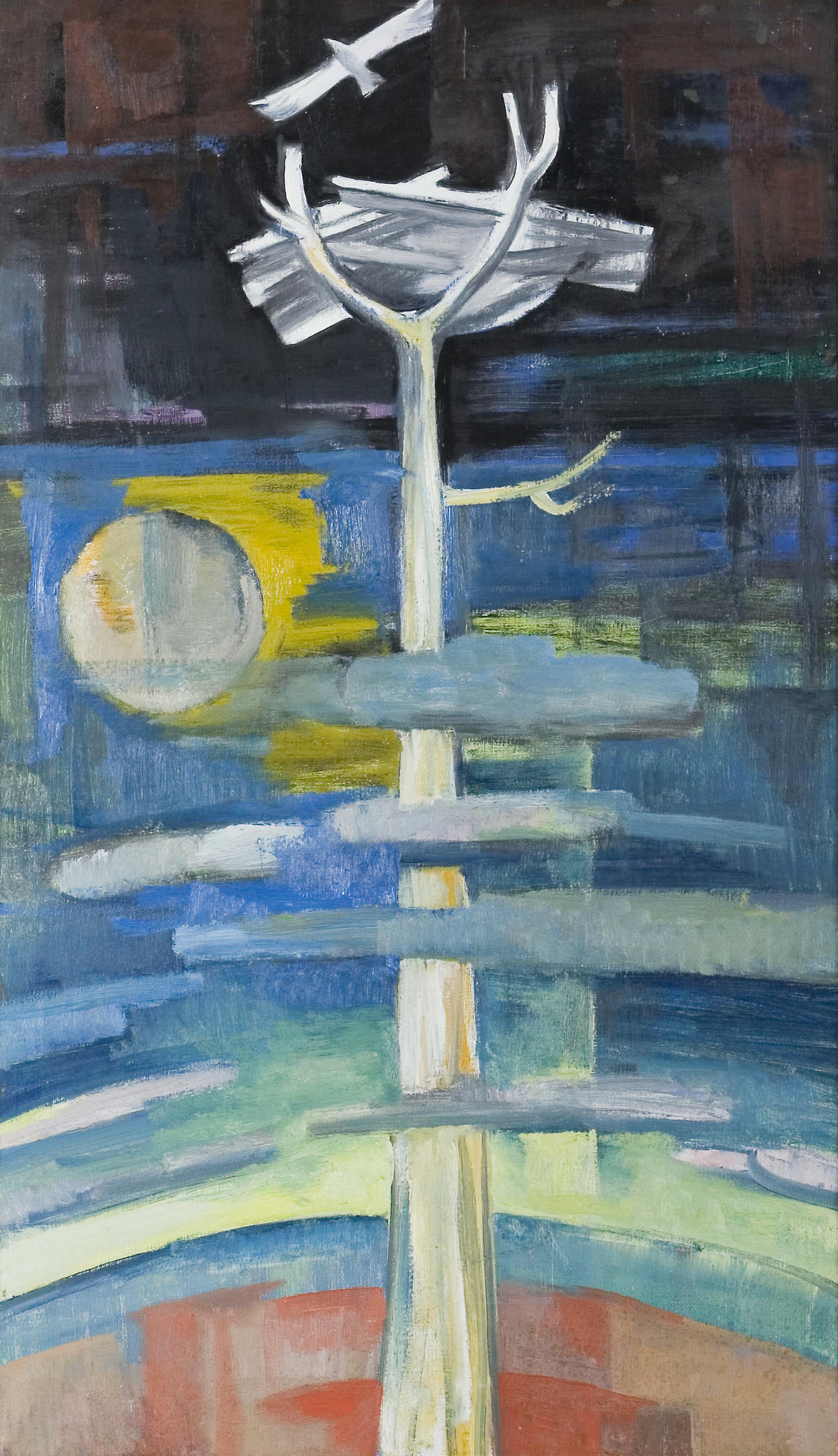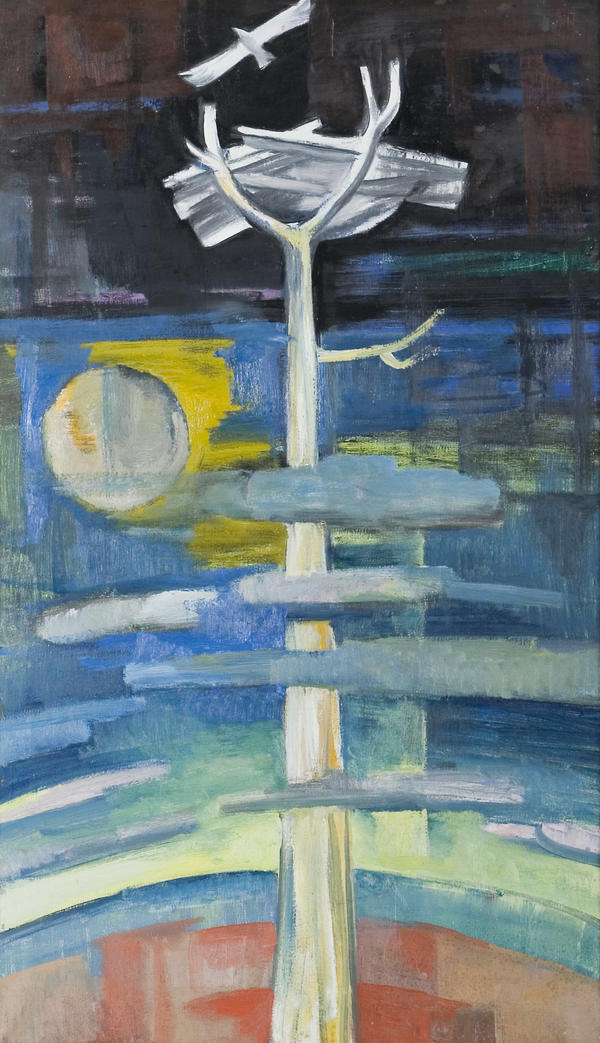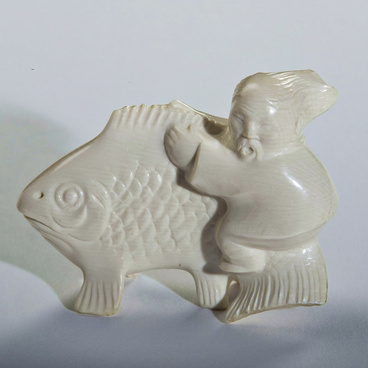“An Eagle”s Nest’ was painted by Isay Kapitonov, a Sakha artist, in 1978. He chose a simple vertical composition for the painting. In the centre, there is the trunk of a tall tree, surrounded by thick tufted clouds. On the top, there is an eagle’s nest, and far in the sky there is a bright sun disc.
Kapitonov borrowed the images from Yakutian mythology. Traditionally, the tree has symbolized happiness, abundance, and heavenly grace. It is situated in three worlds at a time: the Upper World, the home of gods, the Lower World where the dark forces come from, and the Middle World inhabited by humans, as if interconnecting them. Birds live both on the ground and in the sky, this is why they have been perceived as gods’ messengers and guides to the other worlds.
The Sakha people revered the eagle as the major sacred bird. Sources say it’s the eagle who gave people fire. Some Yakutian families revered it as their patron and viewed it as an older relative. In myths, it was the son of the main deity, Khomporuun Khotoi, whose name literally means “hawk-nosed eagle” in Yakut.
In the structure of the painting, the tree is the unifying source, it brings order to the world and acts as an intermediary between man and the cosmos. The artist turned the trunk into a sign of stability and organization of life.
“An Eagle”s Nest’, as well as other works of the artist, addresses the philosophical aspects of folk beliefs. As the language of art, he used national images and metaphors. Art critic Galina Safronova wrote:
“An Eagle”s Nest’, as well as other works of the artist, addresses the philosophical aspects of folk beliefs. As the language of art, he used national images and metaphors. Art critic Galina Safronova wrote:



